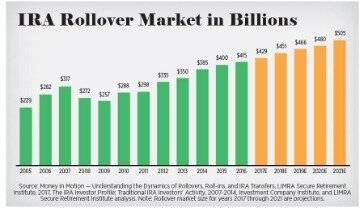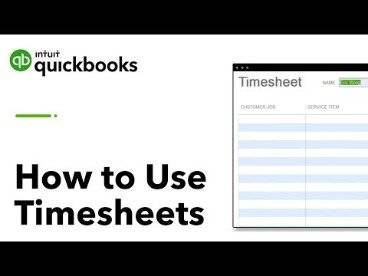Content

Investopedia requires writers to use primary sources to support their work. These include white papers, government data, original reporting, and interviews with industry experts. We also reference original research from other reputable publishers where appropriate. You can learn more about the standards we follow in producing accurate, unbiased content in oureditorial policy.
A Beginner’s Guide to Inventory Turnover Ratio (2023) – The Motley Fool
A Beginner’s Guide to Inventory Turnover Ratio ( .
Posted: Wed, 18 May 2022 07:00:00 GMT [source]
In the next few steps, we’ll find the inventory turnover for this one-year period. Calculate your average inventory cost by adding 12 months of inventory costs together, plus the last end of month cost and divide by 13. Use this tool to calculate how fast you’re selling your inventory to ensure you’re not overstocking.
Inventory Turnover Examples
Inventory management software comes with many features that will help you modernize and optimize your inventory management processes and policies. For example, such software enables your company to switch to the perpetual inventory method in accounting with a continuous real-time record of inventory. Computerized point-of-sale systems and enterprise asset management software immediately reflect changes in inventory by tracking sales and inventory depletion or restocking. It’s important to know what that stock segment is so you can keep plenty of inventory on hand.
- A relatively low inventory turnover ratio may be a sign of weak sales or excess inventory, while a higher ratio signals strong sales but may also indicate inadequate inventory stocking.
- Inventory management software comes with many features that will help you modernize and optimize your inventory management processes and policies.
- Secondly, average value of inventory is used to offset seasonality effects.
- Smart inventory and demand planning capabilities is a great way to reduce the risk of ending up with dead stock that you can’t shift.
- However, the latter is usually preferred, as using the value for COGS provides a more accurate result.
- Think of it as the canary in your retail coal mine—if it starts to drop, you know there’s crucial work to be done optimizing your purchasing and adjusting your sales tactics.
Using additional data points will make your value more accurate.When choosing data points, make sure your points are evenly-spaced throughout the time period at regular intervals. For instance, if you’re finding average inventory for a year, don’t use twelve points from January. A high inventory turnover ratio shows you’re quickly selling inventory and not overbuying. If you have a high inventory turnover ratio, it’s worth taking a closer look at your business to see if there’s anything you can do to improve it. This could be due to effective marketing, a great product, or a combination of both.
Importance of Inventory Turnover for a Business
Utilize integrations to automate placing new purchase orders for timely replenishment. You can also sell through a SKU until it’s done without planning on replenishing it at all. Monitor your return rate and inventory that gets sent back, which can also lead to inefficient storage.
How to achieve Ideal turnover ratio
The ideal inventory turnover ratio varies from business to business. The best solution is to adopt an inventory management system that can gather essential statistics, determine the economic order quantity, and find the perfect balance for your business. You can also find which products are selling best, maintain optimum stock levels, and even automate your stock management, so it is a great deal for any business.
Generally, however, items drift along somewhere in the middle, meaning all companies need a handle on what’s moving and how quickly. That inventory turnover calculation informs everything from pricing strategy and supplier relationships to promotions and the product lifecycle. Also mean you’re not putting in big enough orders when you restock. If your inventory turnover ratio is exceptionally high, your customers may be frequently running into empty shelves as they wait for you to reorder goods.
Challenges when using inventory turnover
Although the average ITR for restaurants was 17.82, rates will vary based on the concept/s you own. A quick serve restaurant like McDonald’s will have a very different ITR than say, a single unit barbecue joint. No matter which ratio you decide to use, it’s important that when comparing your rate to others, you specify whether it’s COS or Total Sales. Managing your restaurant’s inventory sometimes get pushed to the backburner.

We mentioned that the longer you hold inventory, the more your holding costs will grow. This, in turn, will affect things like revenue and profit margin. Most effectively, ensure you have inventory management Excel templates that supports your inventory turnover goal. With an Inventory Management App like Britecheck, you can monitor products as they move in and out of your store, right from the palm of your hand.
How To Calculate Inventory Turnover have just the right amount of inventory to meet demand. Simply put, the higher the inventory ratio, the more efficiently the company maintains its inventory. This is important because it costs money to maintain inventory. There is the cost of the products themselves, whether that is manufacturing costs or wholesale costs.
Reorganize the space to increase the total SKU locations, or even re-rack rows to grow higher if you have vertical room above . Ordering insufficient quantities of your products can also cause you to miss out on bulk discounts and delivery savings. Get instant access to video lessons taught by experienced investment bankers. Learn financial statement modeling, DCF, M&A, LBO, Comps and Excel shortcuts. The Structured Query Language comprises several different data types that allow it to store different types of information…
Finally, remember that inventory turnover ratio is just one warehouse KPI metric you can use to assess your company’s performance. It’s a good idea to look at other measures as well, such as gross margin and return on investment. By looking at all these factors together, you’ll get a more complete picture of how your company is doing.

